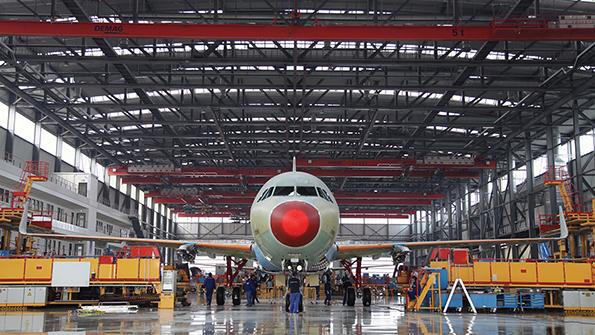
French President Emmanuel Macron was afforded the red-carpet treatment during his visit to China in early April.
Macron’s visit highlighted another ongoing deterioration in the China-US relationship beyond political tensions over trade imbalances, spying, Taiwan and Russia’s invasion of Ukraine. In the first decade of this century, Boeing was the dominant supplier of airliners to China—and was still the market leader in 2019. But since then, Airbus has grown its share in the Chinese market from around 10%-15% to the point to where it is now the largest supplier. By the end of the 2023 first quarter, the Airbus in-service fleet in China had risen to over 2,100 aircraft, representing more than 50% of the market.
Airbus forecasts that over the next 20 years, China’s air traffic will grow at 5.3% annually, leading to a demand for 8,420 new passenger and freighter aircraft between now and 2041, and representing more than 20% of the world’s total demand. If current trends continue, Airbus will win the majority of that demand at Boeing’s expense.
And indeed, there was a payoff for Airbus during Macron’s visit to China, where Airbus CEO Guillaume Faury signed agreements for 160 aircraft for Chinese airlines and the addition of a second A320 family final assembly line (FAL) in Tianjin.
The reversal of fortunes for Airbus and Boeing in China could be attributed to geopolitical fallout. Certainly, Beijing can use its leverage to steer aircraft orders to Airbus, Chinese manufacturer COMAC or Brazilian supplier Embraer and there’s little Boeing can do about that.
But Boeing’s shrinking market share in China isn’t all about politics. It also has something to do with different manufacturing strategies. Airbus’ first FAL in Tianjin began operating in 2008 and has seen more than 600 A320s roll off the line since then. In March, the first Chinese-assembled A321neo was delivered.
Airbus’ multiple FAL strategy—there are also sites in Toulouse, France; Hamburg, Germany; and Mobile, Alabama—has been advantageous in helping meet demand and increase production rates for the popular narrowbody. The second FAL in Tianjin, along with a second FAL that Airbus intends to open in Toulouse, will significantly help the manufacturer meet its stated goal of producing 75 aircraft per month in 2026. As a practicality, having multiple lines is a production advantage over Boeing.
But having “local” FALs in a high-tech industry is also a competitive card the Airbus sales team can play in large markets outside its European home base. The effect in the US is not as large or obvious as in China, but Airbus enjoys strong support from lawmakers and authorities in Alabama and it doesn’t hurt for airlines like American, Delta, Frontier, JetBlue or Spirit to claim “made in America” on their narrowbodies that roll off the Mobile line.
In China, the FAL strategy has worked spectacularly for growing orders, especially with narrowbodies. Between 2000 and 2009, Airbus delivered 60 to 65 aircraft a year to China, according to Sash Tusa, an analyst and partner at Agency Partners. Now, he points out, deliveries average 160 a year.
“That gain in market share has been entirely at Boeing’s loss. Airbus has gone from, let’s say, 15% to over 50% and still rising. Boeing has gone from market dominance to second stroke, third position, depending on quite how bad a year we’ve had in the last couple years. It’s very hard to escape the conclusion that if you manufacture, if you assemble aircraft in China, you have a stronger market position than if you fly aircraft into China for delivery. … This is an industrial policy that Airbus seems to have got very right and Boeing seems to have got very wrong,” Tusa said in an Aviation Week Check 6 podcast.
Boeing does have a 737-completion center in Zhoushan, but that has not helped boost sales anything near as much as the FAL appears to have worked for Airbus, although the grounding of the MAX and its multiple design and production issues may have been contributing factors.
Having an on-location FAL isn’t a sure-fire recipe for success in China. McDonnell Douglas, before it merged with Boeing, had an MD-80 line there that failed. And Boeing has recently won a large order for 787s with Saudi government-owned Saudia and new national carrier Riyadh Air without the need for a FAL commitment.
But the signing of the new aircraft orders and announcement of a second FAL done with ceremony in front of Macron and Xi underscored how hard it will be for Boeing to turn back the clock to its turn-of-the-century dominance in the China market.
Given their difference in FAL strategies in China, it will be interesting to see how the two manufacturers approach another emerging, large and fast-growing market: India.
France and the US each have strong relations with New Delhi that they are keen to foster. Could airliner production be part of those friendship futures?
Listen to a discussion on this topic on the Aviation Week Check 6 podcast.
